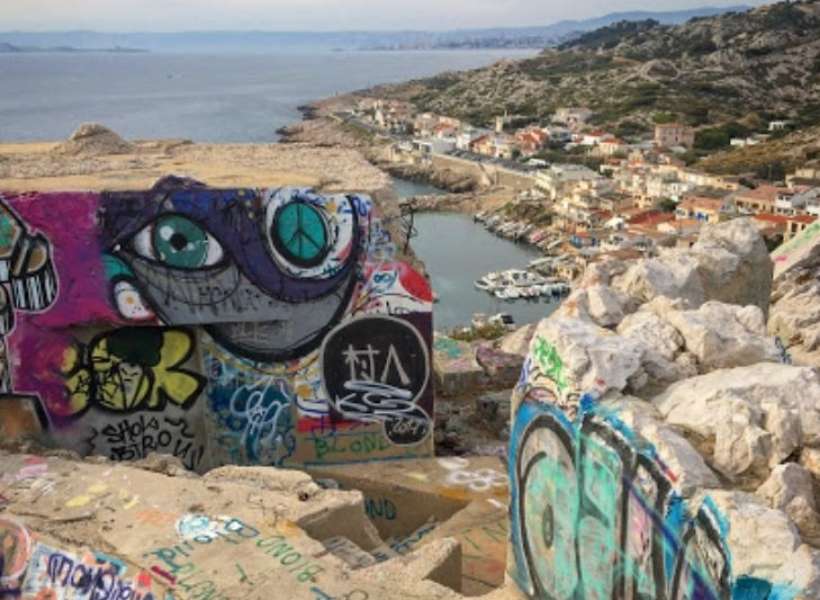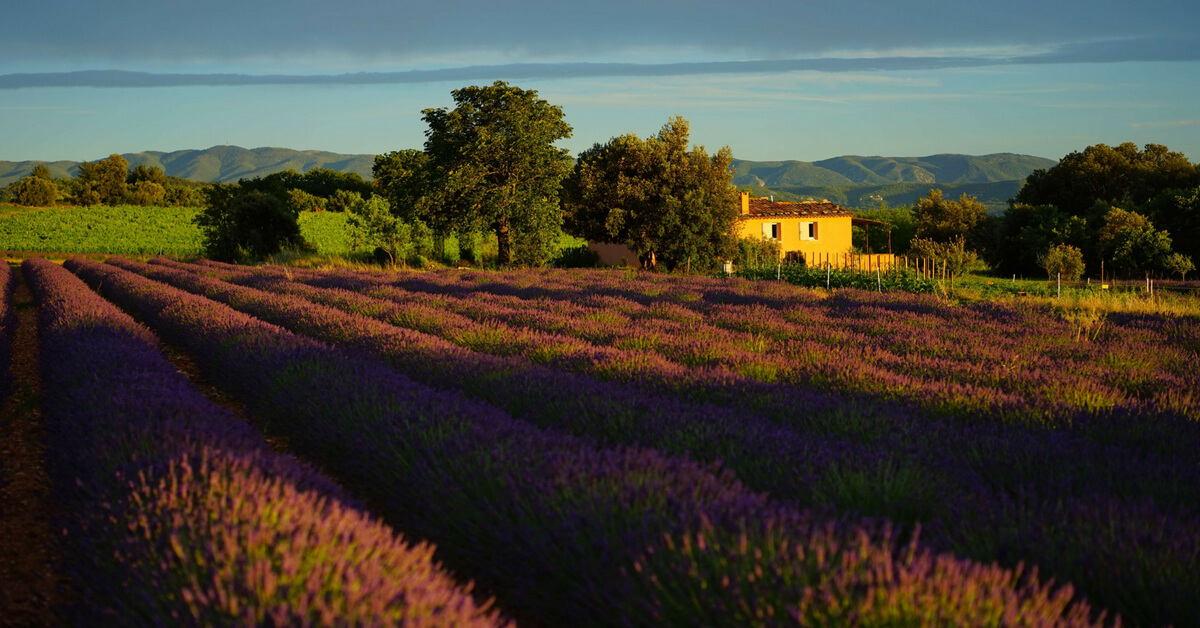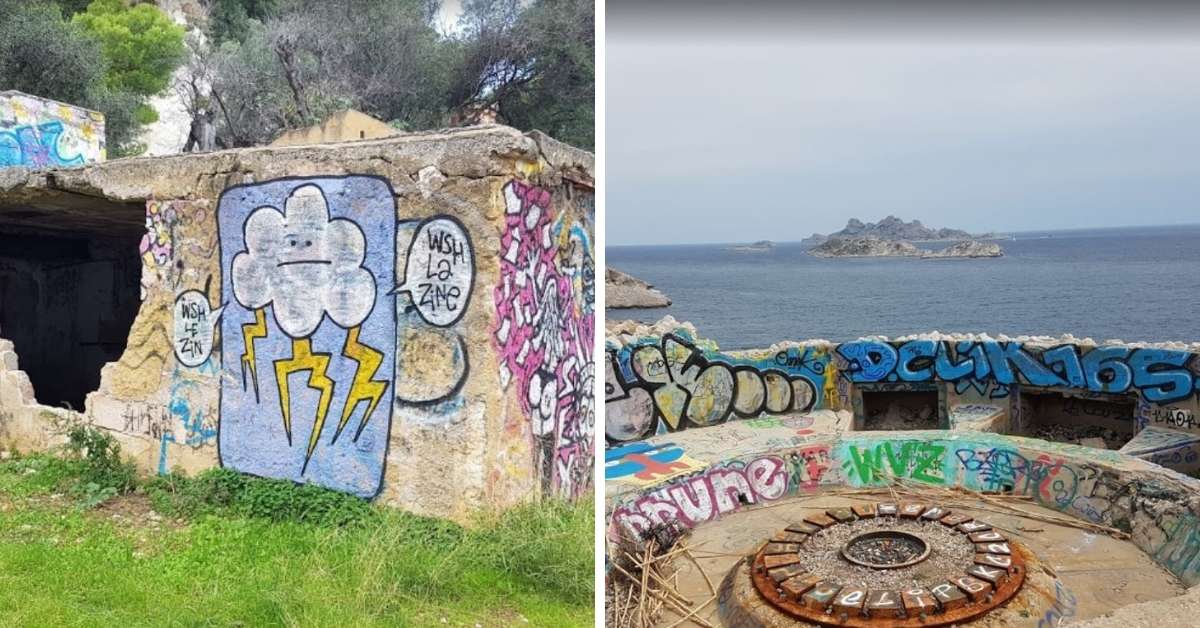This post contains affiliate links, meaning I get a commission if you decide to make a purchase through my links, at no cost to you. Please read my disclosure page for more details.
Category: French History
This episode features our frequent and very popular guest Elyse Rivin. If you enjoy her episodes, please consider supporting her on Patreon.
This is Join Us in France Episode 349. Bonjour, I’m Annie Sargent and Join Us in France is the podcast where we look around France so you can best enjoy France as a destination. We talk about places you might want to visit in France, French news that relate to travel, French culture, history, gastronomy, and everything it takes to have a great time in France.
Today I bring you a conversation with Elyse Rivin about the liberation of the Mediterranean in 1944. We’ve talked about the incredible feats of valor surrounding the liberation of France via Normandy, but that was only part of the job. Lots of Allied troops participated in the liberation of Algeria, Corsica and Provence all around the Mediterranean.
And, unlike Normandy, 50% of the troops who participated were French. But the liberation of the Mediterranean wasn't only done by French soldiers! I bet some of you have relatives who fought in those battles and they rarely get acknowledged because all we ever talk about is Normandy. Aug 15th marks the 77th anniversary of the landing of Allied troops in Provence and it’s an amazing story that Elyse and I will share with you now.
This time the France travel update on how to get your health pass and QR code is at the beginning of my discussion with Elyse and not after the interview. Stay tuned for that.
If you like what we do here at Join Us in France, consider supporting us by visiting Annie's boutique to check out my cookbook Join Us at the Table, my self-guided VoiceMap tours and my services such as my itinerary review where I help you craft the best vacation in France specifically for YOU.
The Liberation of the Mediterranean in 1944: North Africa and Corsica
By August of 1943 the Allied Forces had successfully taken control of North Africa from the Germans. This was mostly in Algeria and in Morocco. From there they began the planning of their “southern offensive” to invade France and Italy from across the Mediterranean and prepare for the large and secret invasion of Normandy. The idea was to create three fronts that would exhaust the German armies and their supplies.
The Allies and the Free French Army arrived in North Africa on November 8th of 1942. It was this occupation and the logical invasion of Europe from the south that prompted the Germans to occupy the southern half of France which had not been occupied up until then. The Germans then proceeded to occupy all of France and set their sites on the ports of Marseille and Toulon where a large part of the French and English fleet were stationed.
Italy in Bed with Hitler
The Italians, who were allied with the Germans, were given the task of occupying Corsica, the big island south of Nice and close to the Italian coast, and the eastern part of Provence.
While the Allies and the French prepared for their invasions of Italy and of Provence, they realized that having a strategic base on Corsica would be very useful for the Air Force and the Navy. There were at that time over 80 000 Italian soldiers on Corsica – they were “sent” there by Hitler and Mussolini because Corsica is strategically located close to the French coast.
And because Italian and Corsican are very similar languages, it was easier for the soldiers to communicate with the Corsicans. That did not prevent the Corsicans from creating a Front National de Liberation, a large Resistance group. This was the Maquis. There were attacks on the Italians and in return there were many reprisals.
Operation Vésuve and the Liberation of Corsica
But in September of 1943 an army of French soldiers, including thousands of Moroccan and Algerian sharp-shooters, led by a General named Giraud began what was to be called ‘Operation Vesuve”; the Liberation of Corsica.
Exclusively French and North African soldiers arrived on Corsica on the 8th of September 1943. The Italians, left without real leadership after the arrestation of Mussolini, and apparently, not too driven to make war on the Corsicans in spite of their numbers, under the orders of a general named Magli, immediately signed an Armistice with the French and from that point on, helped them and the Allies.
But Corsica was strategically important to the Germans, especially the southern part of the island, as it was from there that they attacked southern France. The Germans had already a huge base on Sardinia as the Italians were their allies. But once Mussolini was arrested, the chief general, Magli, ordered his troops to fight alongside the Allies and consider the Germans as enemies.
The Liberation of the Mediterranean and Corsica
So it was that the French Forces and the Corsican Front National of Liberation managed, in an extremely short time, to take command and liberate the island. The real “hero” was an officer of the Gendarmerie (the national and military police) named Paulin Colonna d’Istria, born on Corsica, who was sent there and with a lot of charisma and knowledge of local customs, completely organized the various small groups of Resistants into an orderly army.
It was thanks to him that all the small hidden groups came together and coordinated, with the French army, the complete liberation of the island. The only help they got from the Allies was a British submarine that came up on the eastern shores of the island and supplied them with a load of arms and a battalion of 400 special forces American soldiers were sent to participate in the freeing of the island.
Miraculously, in only three weeks time, Corsica became, as De Gaulle proudly announced on the radio, “the first part of continental France to be free, to be liberated from the invading forces”.
The USS Corsica
Corsica became, nicknamed the USS Corsica, home to over 50 000 air and navy men on what they called their “unsinkable” ship: the island base. October 5, 1943, Corsica thus became known as THE USS CORSICA. In total, there were 17 bases set up on the island, with all the equipment necessary to prepare both the invasion of Italy and the Liberation of Provence. And it was from Corsica that Operation Anvil - Dragoon : the liberation of Provence, was launched.
An article in the New York Times from 2008 describes the experiences of some young Corsicans when the Americans arrived and what happened on the island. The Americans left enormous amounts of material: truck parts, motors, bombs, bullets, tents, gasoline, parts of planes and everything they couldn’t take with them when they left in the spring of 1945 to relocate to Italy. And they gave cigarettes, chocolate, canned fruit, and wheat flour and powdered milk to the local population that was largely very poor. They also sprayed the eastern marsh lands with to rid them of mosquitoes. For this reason the Americans, to this day, are well remembered on Corsica.
Military Cemeteries Related to the Liberation of the Mediterranean
For those who are interested in military cemeteries; particularly from WW II, there is an American cemetery in Draguignan in the Var. It is the only one in the southeast of France. It was created in 1944 after the liberation of Provence, and made specifically to hold the remains of the American soldiers who died during that battle. There are 861 marked graves, 62 unknown soldiers, and there is a monument with the names of 294 soldiers whose bodies were never found. If you are in Provence, in the Var, it is a special visit to make.
The Liberation of Provence by the Allies
In the night from Aug 14 to the 15th 1944, 2200 ships including 900 warships left the coasts of Italy, Corsica and North Africa to converge on the shores of Provence. Aboard were American, British and French troops. The French were led by Lattre de Tassigny, the Americans by Generals Truscott and Patch. They landed on the shores of Provence between Nice and Marseille (that’s 150 km of coastline) at 8 AM on August 15th. This operation was called Anvil and then they changed the name to Dragoon.
The Liberation of the Mediterranean: Dragoon and Overlord
Originally Operation Dragoon in Provence and Operation Overlord in Normandy were scheduled to take place at the same time early June 1944 in an effort to squeeze the German invader out of France.
If you can picture the map of France in your head, Overlord took place in the north west and Dragoon in the south east. That left the south west (Bordeaux area) and the north east (Strasbourg area) without pressure from the allies. This was worrisome to the Allies (especially Churchill who was vocal about this) because it left Communist Russia take control of the liberation of France from the east. The Allies needed the Russians to squeeze the Germans out, but they weren’t completely comfortable with letting Russia take credit for so much of the war effort.
The Role of Russia in Liberating France
In reality, the Allies didn’t have a viable solution for liberation from the east without massive involvement from the Russians. But they considered perhaps attacking the Germans from further east like Greece and Albania, then pushing towards Yugoslavia and Austria. They wanted to take Berlin as fast as possible.
A massive landing and a push to take over Italy was also considered, that’s how they started planning operation Anvil which they hoped to run early 1944. Remember that Mussolini was still in bed with Hitler and the Allies were fighting in Italy, but should they launch a massive coordinated attack to retake Italy? That wasn’t going to be possible because of a line of defense the Germans called Gustav. So, they gave up on Anvil and planned another operation they named Dragoon.
The Commander-in-Chief of Allied forces in the Mediterranean General Sir Maitland Wilson wanted to do a massive landing in the plains of the Pô river (if you draw a line between Venice and Turin) and then push north. This would have chewed up German defenses, pushed towards Berlin faster (because it’s closer geographically) and thus limit the involvement of Russia.
The Liberation of the Mediterranean and Deep Water Ports
This plan was not to be. Eisenhower decided that the Allies didn’t have the bandwidth to do everything at once and he decided on Provence. Why Provence? Because they needed deep water ports and Marseille, and Toulon were perfect for that. Those are big ports that can accommodate large war ships.
Going east, the port of Sète is not big enough and a canal can be easily bombed. So, Eisenhower settled on retaking the ports of Marseille and Toulon.
If you recall, they built temporary ports in Normandy (Arromanches, Mulberry) but that wasn’t going to be enough. The ports of Le Havre and Cherbourg are deep water ports, but they are far away from Saint-Malo and Saint-Brieuc where the Normandy invasion took place.
Remember that there were 3 major military operations to push back Germans in the Mediterranean:
- Operation Torch (North Africa November 1942)
- Operation Vésuve (Corsica October 1943)
- Anvil Dragoon (Provence August 1944)
After Operation Torch, Hitler placed 150,000 soldiers in the Provence area and make keeping the ports one of his main objectives. The Germans built bunkers and a whole “Wall of the Mediterranean” much like what they had done in Normandy with the Atlantic Wall.
So you had bunkers, canons, mine fields, and barbed wire all along the coast BOTH in Provence and in Normandy. Around the port of Marseille they positioned 200 of their major canons.
German Bunkers you can still see in Provence
What Hitler didn’t have in Provence was air power. The Allies were able to take advantage of that.
The event had been announced by coded messages including the sentence “Le premier accroc coûte 200 francs” as reported by Elsa Triolet who won the first Goncourt awarded to a woman for her short stories on the Resistance.
The Daily La France Libre mentioned 900 ships and 800 gliders who came to challenge the Mediterranean wall put in place by Rommel between Toulon and Marseille.
A Massive Strike Force
Tuesday at dawn a powerful armada of more than 900 ships with French, English and American flags came to face German batteries. At the same time hundreds of gliders and 14,000 parachutists landed further inland in Provence. A majority of the soldiers who landed were either French and/or from French colonies. Their role was to take over German coastal defenses.
It started on Monday, Aug 14th 1944 with heavy bombardments of the ports of Toulon and Marseille and the area east of Cannes. 750 allied planes were involved.
At dawn on the 15th a whole armada of ships and gliders dropped off soldiers. This was the first time so many French soldiers fought along with Allied forces.
Things went well and the Germans didn’t fight back as much as the Allied feared. The Germans fought back on land but didn’t send enough planes.
Very quickly several strategic towns and islands were occupied by Allied forces.
Unlike in Normandy, few soldiers died during the liberation of the Mediterranean. This may be one of the reasons why we don't talk about it as much.
General Wilson Gave Instructions to the French Nation
At this moment allied armies are coming to deliver you. We ask you to follow 5 rules:
- Leave the roads clear. The Germans will do what they can to push you to take your possessions and hit the road, we ask you not do.
- Do not try to cross enemy lines. You would risk your life and you’d make it harder for the allieds to prevail.
- Watch what the Germans are doing. Take note of them moving equipment and troops, document everything you witness. Allied troops may need that information.
- Be disciplined. If you are in the Resistance, obey your superiors. If you are not in the Resistance, ask your friends for advice. We do not want individuals to take big risks. The whole nation, disciplined and united, working with the Allies can chase the Germans away.
- Only follow official instructions. Do not act prematurely. Listen to official Allied radio stations. Beware of rumors. Remember that the Allies will not ask you to take excessive risks. The fight has begun, victory is ours!
FOLLOW US ON:
Email | Facebook | Instagram | Pinterest | Twitter
Discussed in this Episode
- Algeria
- Corsica
- Provence
Subscribe to the Podcast
Apple Google Spotify RSSSupport the Show
Tip Your Guides Extras Patreon Audio ToursIf you enjoyed this episode, you should also listen to related episode(s):
- Operation Overlord and the Battle of Normandy, Episode 201
- D-Day History, Normandy Invasion Special, Episode 18S
- Visiting D-Day Sites with Kids, Episode 297

Category: French History


